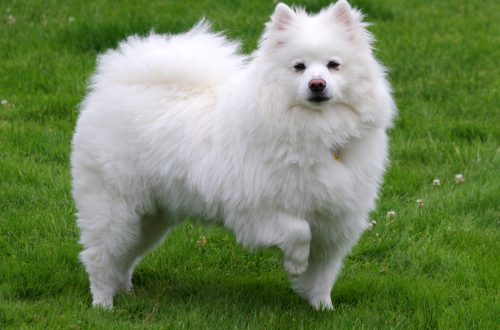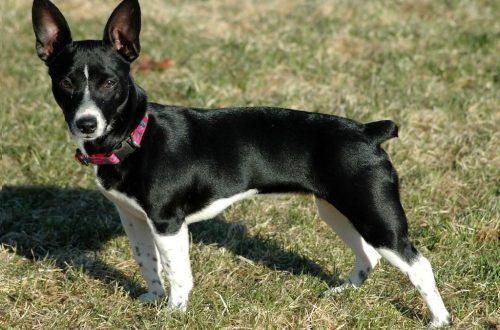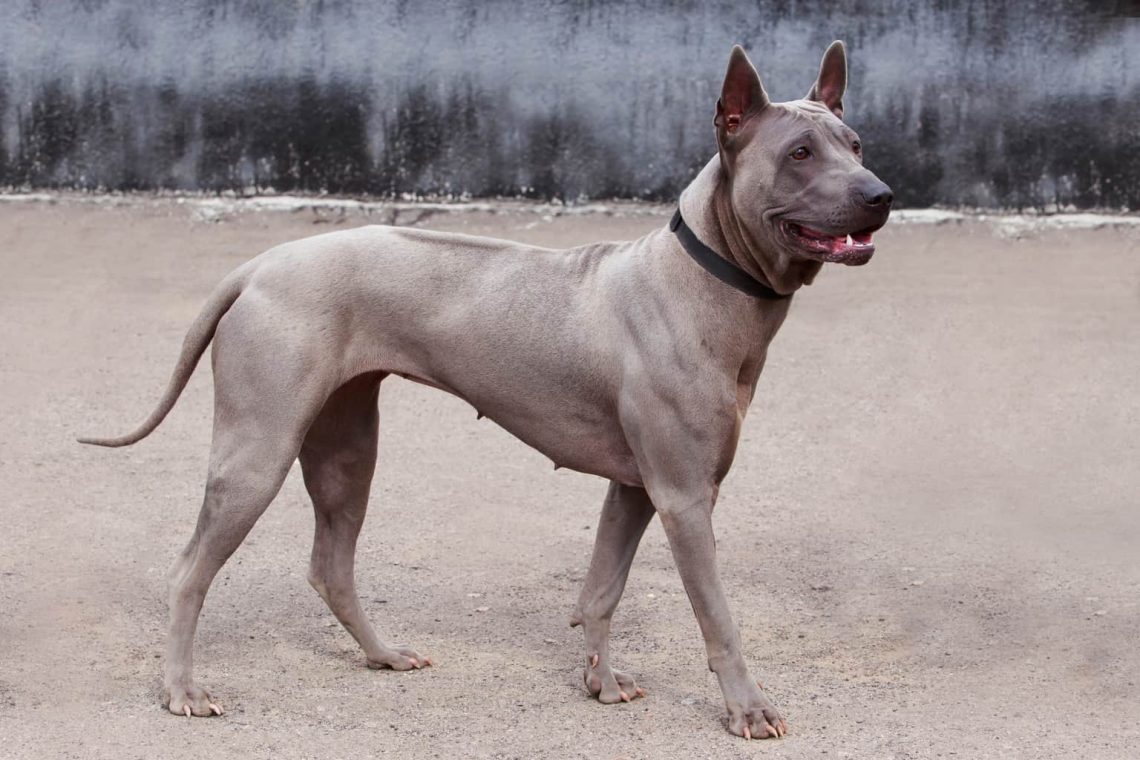
Thai Ridgeback
Other names: TRB , MakhTai
The Thai Ridgeback is a national treasure of the country and a gem that stands out from other dog breeds. It is difficult to pass by this stately handsome man and not look after him with admiration.
Contents
- Characteristics of Thai Ridgeback
- Basic moments
- History of the Thai Ridgeback breed
- Video: Thai Ridgeback
- Appearance of the Thai Ridgeback
- Photo of Thai Ridgeback
- The nature of the Thai Ridgeback
- Education and training of Thai Ridgeback
- Care and maintenance
- Health and Disease of Thai Ridgebacks
- How to choose a puppy of Thai Ridgeback
- Photos of Thai Ridgeback puppies
- How much does a Thai Ridgeback cost?
Characteristics of Thai Ridgeback
| Country of origin | |
| The size | |
| Growth | |
| Weight | |
| Age | |
| FCI breed group |
Basic moments
- Thai Ridgebacks are famous for their independent and stubborn nature, which can only be tamed with love and unlimited patience.
- Dogs cannot stand loneliness and prefer to take an active part in the life of their family.
- From the “Thai” you can get a good watchman, but you do not need to expect a zealous protection of the territory from him.
- Ridgebacks manage to get along with most pets, with the exception of ornamental rodents and birds.
- Representatives of the breed are patient with children and rarely show aggression towards them.
- Thai Ridgebacks need regular physical activity, but do not require walks at fixed times.
- Despite their quick wit, “Thais” are difficult to train because of their wayward behavior.
- Pets are not suitable for keeping novice dog breeders.
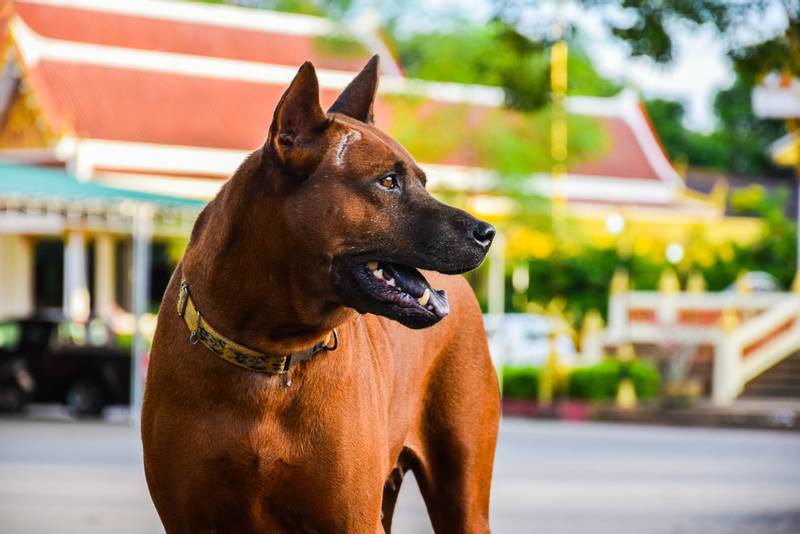
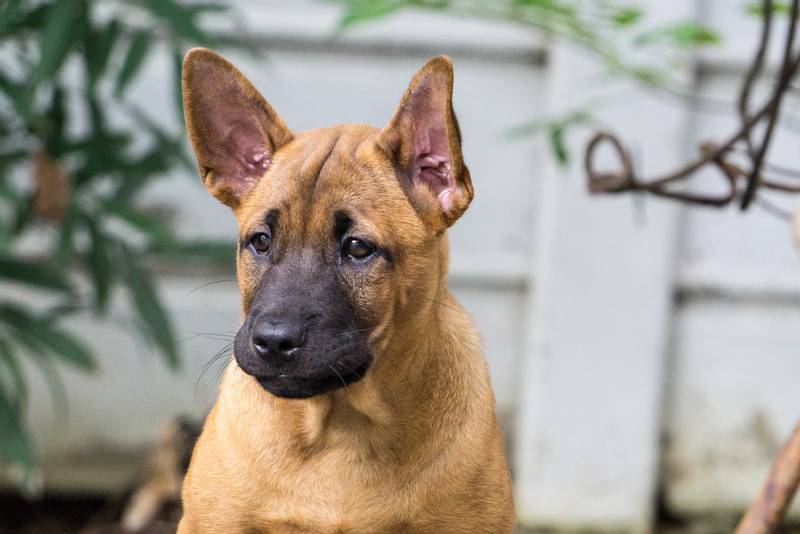
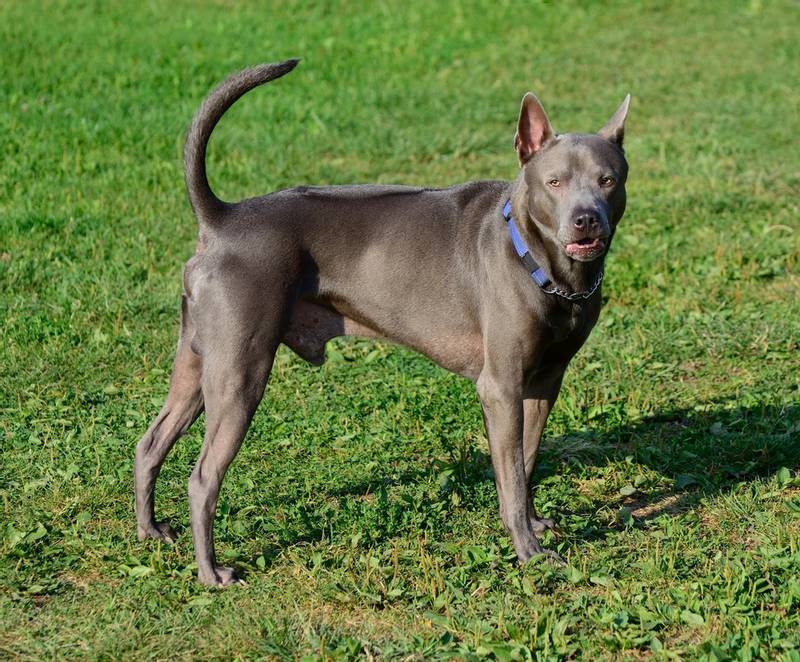
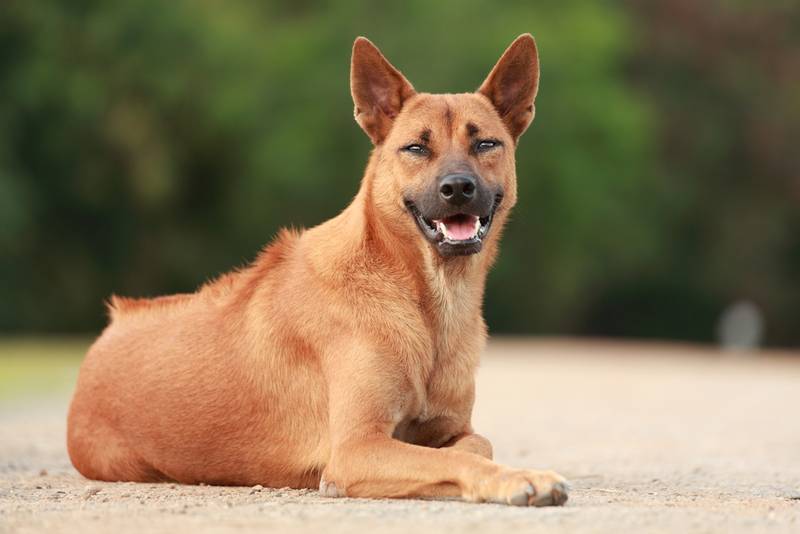
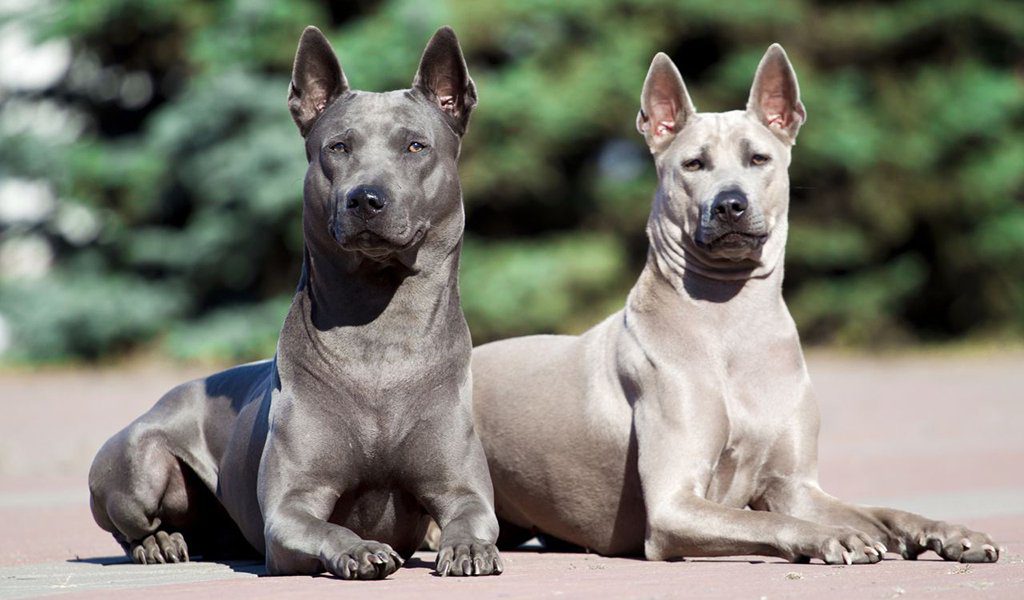
The Thai Ridgeback is one of the oldest and rarest breeds. To accidentally see such an amazing dog on the street is luck out of the ordinary. These animals are rarely found outside their homeland, but because of this they are only more valued by dog breeders around the world. The nature of its representatives gives no less importance to the breed: strong, fearless and unconditionally devoted. Thai Ridgebacks cannot imagine life without two things: long walks and communication with the owner. From this it follows that the dog is easy to please, just go for a walk with him in the city park and let him stretch his paws in pursuit of the ball or Frisbee.
History of the Thai Ridgeback breed
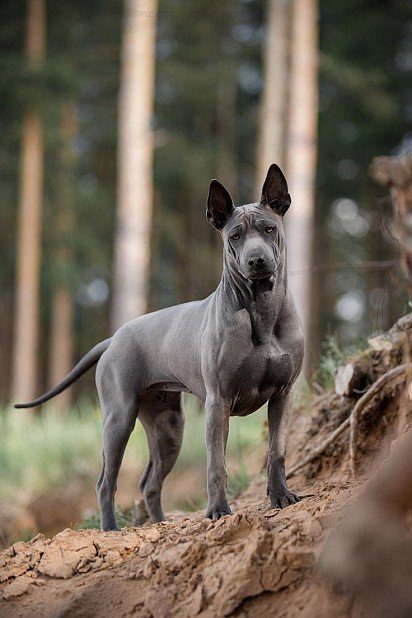
The four-legged inhabitants of eastern Thailand are among the original breeds, the development of which took place without the intervention of breeders, according to the laws of natural selection. The history of Ridgebacks began about 3-4 thousand years ago – it is this period of time that the first mention of the breed dates back to. They are represented by ancient drawings from Thailand and Cambodia, which depict similar dogs – presumably the ancestors of the Thai Ridgebacks. They can be recognized by their erect ears and sickle-shaped tail. In some places, a characteristic ridge (comb of wool) is also visible on the backs of animals.
The progenitors of the “Thais” found their place in written sources. The Ayut manuscript, dating from the first half of the 17th century, mentions dogs that have a lot of similarities with modern Ridgebacks. There are no more precise “evidence” that would help trace the history of the breed, so the origin of these dogs is a secret with seven seals. Most breeders adhere to the following version: Thai Ridgebacks are the result of the union of Aboriginal dogs and wild dingoes.
The share of uncertainty is inherent in the homeland of animals. Officially, island and mainland Thailand is considered to be the distribution area of ridgebacks, but Indonesia is increasingly being called a possible habitat for the first representatives of the breed.
In some way, dogs are mongrels, if we put the generally accepted meaning into this word. During the history of its existence, Thai Ridgebacks did not interbreed with other breeds and appeared in the wild. The hot climate of the country forced the animals to get rid of their massive physique and thick coat. Each generation of Thai mutts acquired more and more similarities with modern representatives of the breed.
The insignificant area of distribution of dogs has become the reason for forced inbreeding – mating of closely related individuals. Animals unsuitable for survival died, giving way to strong and hardy brethren. Then they were noticed by local residents who needed universal working dogs for hunting and protecting property.
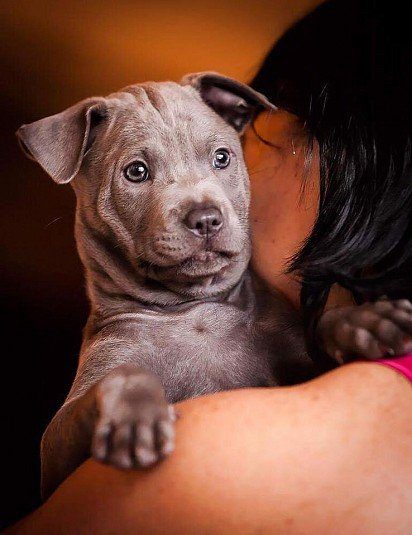
The first attempts to domesticate wild animals began. Like all four-legged natives, the ancestors of the Thai Ridgebacks were distinguished by their freedom-loving and independent disposition. For this reason, animals were a danger even to their owners, not to mention strangers. However, attempts to domesticate wild dogs did not stop. Ridgebacks were valued for their intelligence and agility. These qualities allowed the Thais to use animals as shepherds and draft power.
Ridgebacks were no less useful for hunting. Dogs accompanied the natives in baiting deer, tapirs, large wild boars and even birds. The lightning-fast reaction of animals made them indispensable companions of hunters. The courage with which the dogs could throw themselves at dangerous snakes and thereby save the owner from death was also useful.
The symbiosis of humans and Thai Ridgebacks lasted until the 19th century. Along with technological progress, colonialists came to the lands of Phu Quoc Island (Phu Quoc), who liked charming and unusual dogs. Ridgebacks caused a similar reaction among European merchants who traded with Thai natives. Word of a possible new breed reached the leading cynologists of the time. Having organized an expedition to Thailand, dog breeders were astonished: before them appeared a previously unknown variety of dogs!
It was impossible not to notice a characteristic feature – a comb growing along the spine – it was impossible. Among the known breeds, there were no similar dogs, so cynologists decided to popularize the discovered animals.
Thailand and Japan were among the first countries to officially recognize Thai Ridgebacks (1989 and 1990, respectively). Other states were in no hurry with hasty conclusions regarding the uniqueness of dogs. Only three years later, the international cynological organization FCI registered a new breed and approved its standard. At that time, the pedigree books of the Ridgebacks numbered more than five thousand dogs.
Although two decades have passed since then, “Thais” are still one of the least numerous breeds. Thai Ridgebacks are bred not only in their historical homeland, but also in America, as well as in Europe and Asia.
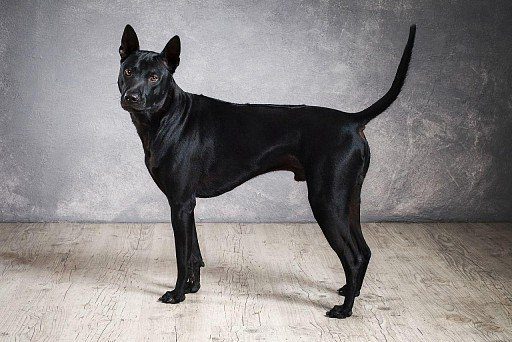

Video: Thai Ridgeback
Appearance of the Thai Ridgeback
The Thai Ridgeback is a large dog. The geographical isolation of the country and, as a result, the impossibility of inbreeding with other breeds led to a logical result. These animals managed to maintain their original appearance without major changes. The proportions of the strong body of the Ridgeback are slightly wrong: the height of the animal at the withers is less than the length of its body (the ratio is 10:11). The muscles are developed.
The breed standard determines the height of females and males: 51-56 and 56-61 cm. The exact parameters for the weight of dogs are not indicated, but it should be proportional to the height at the withers: about 23-34 kg for males and 16-25 kg for females.
Head and skull

The head shape of the Thai Ridgeback belongs to the wolf type. When examining the animal from the side, a sloping forehead line is noticeable. Periodically, small skin folds appear on it when the Ridgeback is alert or interested. The skull is rounded, flattened in the area between the ears. Its length and front part are in the ratio 3:2.
Muzzle
The wedge-shaped muzzle is slightly shorter than the top of the Ridgeback’s head. The stop is expressed quite moderately, but at the same time it is clearly visible from any angle. The smooth back of the nose narrows to a lobe of black or bluish hues (the latter is only valid for blue-colored Thais). Expressive cheekbones contrast with flat cheeks. The tight lips of the dog do not create a feeling of frizziness, as they are adjacent to the teeth and completely hide them.
Ears
The head of the Thai Ridgeback is “decorated” with medium-sized triangular ears. They are placed on the sides of the skull, slightly tilted forward. The tips are not rounded, the auricles are open. Buying is prohibited.
Eyes
The large eyes of the dog are almond-shaped, set rather deep in relation to the muzzle. The eyelids are dry, tight to the eyeballs; oval cut. Brown pigmentation of the iris is preferred (the richer the shade, the better). In blue animals, amber eyes are acceptable.
Thai Ridgeback Jaws and teeth
The strong and firm jaws of the Thai Ridgeback form a scissor bite. The teeth sit tightly in the gum and make up a complete set. The dog’s tongue is notable for black pigmentation or the presence of spots of the same color.
Neck
The strong neck of the “Thai” is set high and proudly, it is distinguished by a slight bend and the absence of dewlap. Developed muscles are well palpable through the skin of the animal.
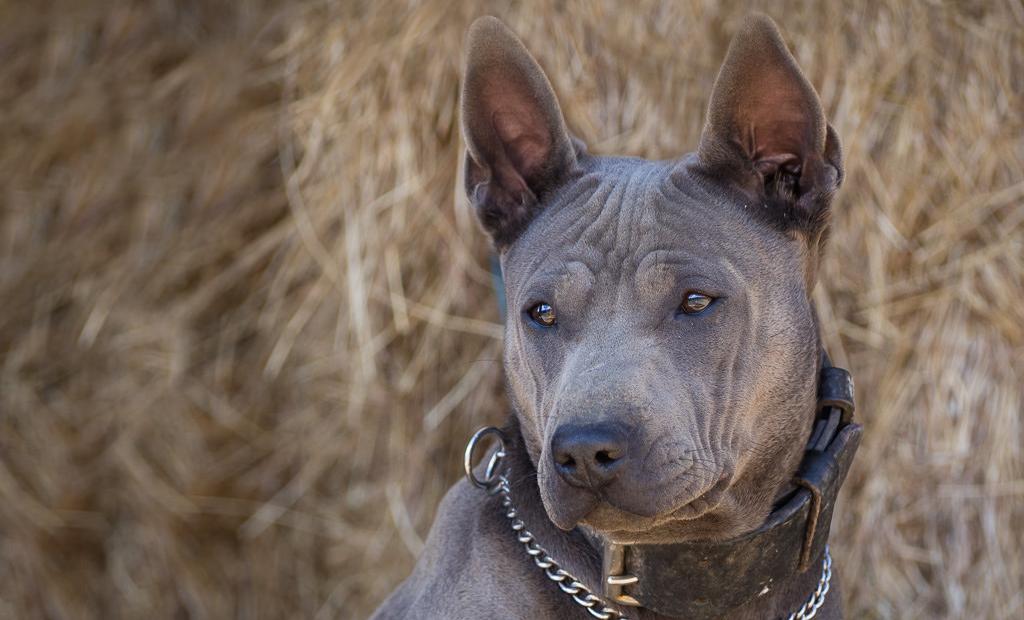
Frame
The body of the Thai Ridgeback is characterized by a moderately elongated format. The straight line of the back passes into a flat lower back, and then into a rounded sloping croup. Elongated ribs form a developed, oval chest in section, reaching the elbows. The abdomen and groin are tightened.
Tail

The relatively long tail of the Ridgeback is sickle-curved and tapers from base to tip. Mostly carried vertically upwards.
Forelimbs
The humerus and shoulder blades are directed backwards. The straight forearms pass into the pasterns, the slight slope of which is noticeable when examining the dog in profile. The paws of the Thai Ridgeback are distinguished by their oval shape and crowded toes. The pads are hard to the touch. The nails are strong, pigmented in dark or light shades (the second option is less preferable).
Hind limbs
Ridgeback hips are characterized by developed and strong muscles. The angles of the stifles and hocks are pronounced, while the latter are located rather low. The parallel metatarsus is strictly straight, which is especially noticeable behind. Crowded fingers form graceful oval paws. Both dark and light pigmentation of the nails is acceptable. The pads are firm and firm.
Movement style
Thai Ridgebacks follow a clear rhythm, moderately stretching each step, but not allowing “waggling” of the body. The animal’s fore and hind limbs are not thrown out in any direction, providing a strong propulsion. The movements are harmonious and free, with a proportional arrangement of the joints relative to each other.
Thai Ridgeback coat
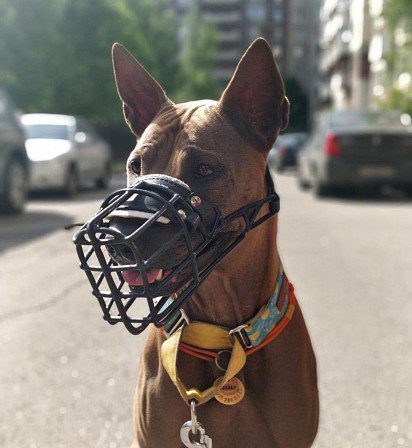
Ridgebacks are short-haired dog breeds. With its softness, the hairs resemble expensive velor. The undercoat is almost completely absent. The coat of animals is divided into four categories.
- Super short velor (hair length – 0.1-0.3 cm). It looks the least presentable, because from a distance the dog seems to be bald. At the same time, short hair does not protect the Ridgeback from insect bites, which “decorate” the body with spots and blisters.
- Velvet (hair length – 0.5-0.8 cm). Delicate and pleasant to the touch. It perfectly copes with the performance of the protective function, unlike the previous type.
- Short (length of hairs – up to 1 cm). It is regarded as an intermediate type between velvet and standard.
- Standard (hair length – 1-2.5 cm). The coat protects not only from annoying insects, but also from adverse climatic conditions.
A key feature of the Thai Ridgeback is a clearly contoured ridge on the back. Among its common forms are:
- violin;
- guitar
- arrow;
- skittles;
- saddle;
- needle;
- sheet;
- feather.
The comb should not go over the sides of the dog. Curls at the ends of the hairs are acceptable, and their symmetry is more than desirable. Ideally, the length of the ridge is ¾ of the length of the back. Minor deviations within 2-3 cm are not considered a rock defect.
Color
The standard recognizes solid colors in the following shades:
- light fawn;
- blue
- red;
- black.
A white spot on the chest of the animal is acceptable.
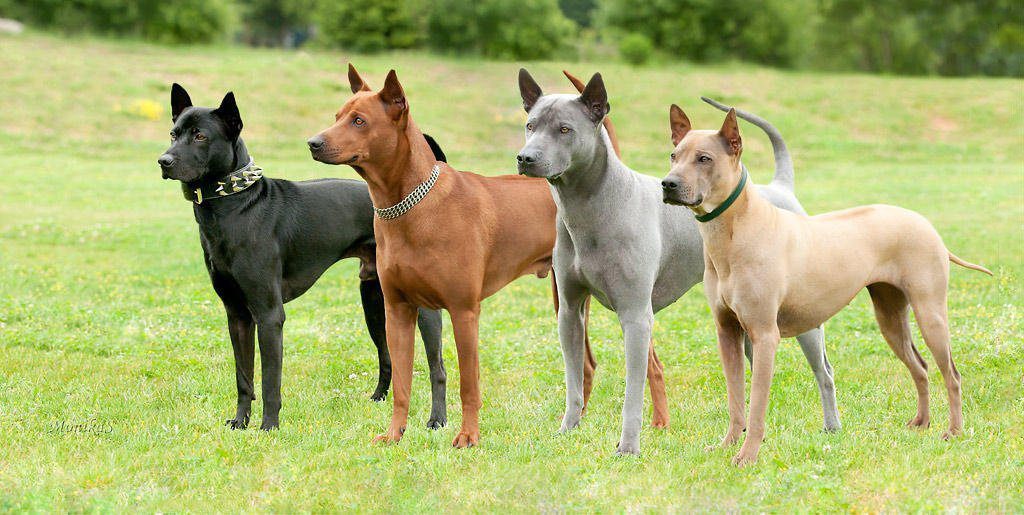
Possible vices
Common defects in the Thai Ridgeback breed include:
- zigzag or broken ridge;
- direct and wedge-shaped bites;
- light pigmentation of the iris;
- rounded tips of the ears;
- atypical shape of the muzzle;
- full jagged lips;
- abundant undercoat;
- round eyes;
- short tail.
Disqualifying faults include:
- obvious deviations in appearance;
- fearful or aggressive behavior;
- undescended testicles into the scrotum;
- complete absence of a ridge;
- white and brindle colors;
- long hair.
Photo of Thai Ridgeback
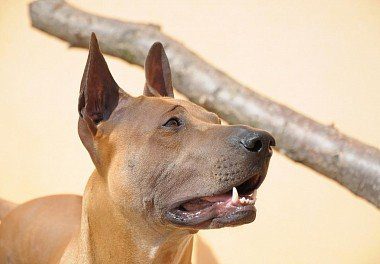
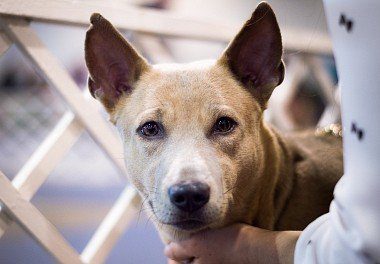
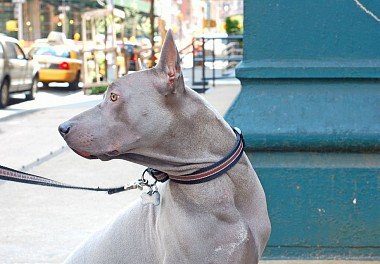
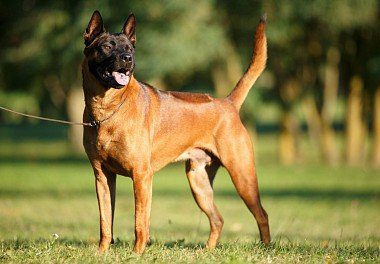
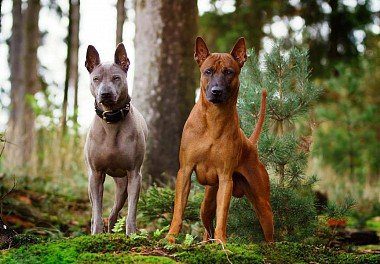
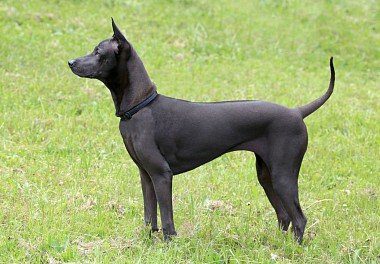
The nature of the Thai Ridgeback
Communication with the Thai Ridgeback is reminiscent of the famous film “The Taming of the Shrew.” Only experienced dog breeders can pick up the key to the heart of a pet. Extravagant appearance is not the only difference between Thai Ridgebacks and other dogs. The nature of these animals is inherent in stamina, bordering on stubbornness. Ridgeback cannot be re-educated, and a rare success in this matter will result in problems with the dog’s psyche. For this reason, representatives of the breed need an experienced and patient owner who is not afraid of difficulties in communicating with his pet.
Remember: males tend to be more dominant and independent than females, so it is important to consider this point when interacting with an animal.
However, you should not give up on Thai Ridgebacks just because of their independent nature! The owners of these dogs speak of them as the most devoted friends and companions. “Thais” cannot stand loneliness and prefer to bathe in the rays of universal love and attention from the family. At the same time, it is important not to raise your voice to the pet if you are annoyed by such a strong obsession. Representatives of the breed are distinguished by a fine mental organization, and rudeness on the part of the owner will cause them irreparable offense.

The developed intelligence of Thai Ridgebacks, combined with their powers of observation, gives an amazing result. Dogs carefully analyze what is happening, listen to people and distinguish their intonations. In response to his nickname, the ridgeback will demonstrate an extreme degree of interest and will not take his eyes off the speaker. At the same time, characteristic folds will appear on the forehead of the animal, which most clearly indicate direct participation in the “dialogue”.
Representatives of the breed are rather contradictory in their desires: now they need an active walk, and after five minutes they are already sniffing comfortably on the bedding and dreaming of juicy meat bones. Thai Ridgebacks tend to adapt to their owner’s lifestyle. “Going out” can wait until a certain point: Ridgebacks will not jump on the door with a loud bark and follow you with a leash in their mouths. However, the lack of fresh air and new experiences will adversely affect the balanced psyche of your pet.
Communication with strangers does not please the dog. Thai Ridgebacks are wary of strangers, do not allow themselves to be stroked and do not respond to affection with a friendly wag of the tail. This distrust is the key to the successful performance of the role of a guard dog. However, for an ardent and selfless guard, ridgebacks lack aggressiveness. An animal is more likely to emit a warning roar than to rush to attack a person who has illegally invaded its possessions. Loud barking and attacking is the last thing you can expect from a Ridgeback. However, only a madman will encroach on the possessions of a serious and stately handsome man, resembling a representative of fighting breeds, so the appearance of the “Thai” only plays into the hands.
And let your friends call the Ridgeback an unsociable “grouchy”: you know how affectionate and loving a pet can be! Representatives of the breed get along well not only with family members, but also with other pets. In the company of a Thai Ridgeback, it is not scary to leave even a cat: he is more likely to share a litter with a meowing brother than to give chase. Ridgebacks leave the last occupation for walks, where they will not miss a single yard cat, dove and sparrow. A loyal attitude towards other dogs is maintained only up to open aggression on the part of the opponent.

Ridgebacks love children and are ready to participate in their active games all day long. At the same time, dogs show complete indulgence to the carelessness of small family members and never respond to them with a formidable grin. However, the frequent communication of a child with a “Thai” can make the latter extremely naughty: the ridgeback needs a firm hand and careful control, which cannot be expected from children. If possible, do not leave your pet alone with your child – this will avoid many incidents in the future.
Thai Ridgebacks are real four-legged athletes. These animals cannot imagine their life without running and jumping from puppyhood. Adjust the daily routine in such a way that your pet can throw out all the energy during a walk. Otherwise, the Ridgeback will demand a “continuation of the banquet” upon returning home. A ball, a frisbee, and even a stick picked up from the ground are your best helpers.
The wild progenitors of the breed inherited the hunting instincts of the dogs, which still make themselves felt and make walking without a leash almost impossible. Any smaller living creature is regarded by the Thai Ridgeback as prey, so it is important to control the pet at this moment. Please note: males run away more often than females, so do not give them free rein.
Education and training of Thai Ridgeback
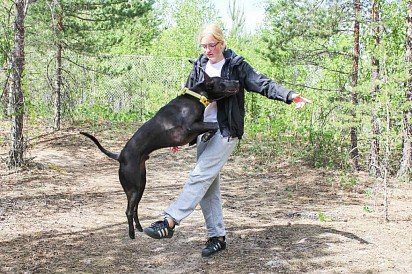
Raising a Thai Ridgeback is not an easy task. Ideally, you should start training with a dog at the age of one and a half months, but this is often impossible: kennels put up puppies for sale only when they reach three months. The adaptation of the baby to new conditions takes no more than a day: you should not give your pet indulgences from the first day they appear in the house. Be assertive and diplomatic; passivity and cruelty in dealing with a ridgeback are unacceptable.
Having matured, the dog will not leave attempts to test your patience “for strength”. Don’t worry, your pet hasn’t stopped feeling boundless love for you. The reason for this is the obstinate nature of the Thai Ridgeback. When communicating with an animal, you need to learn the following: the pet is always right, and only you can be considered the culprit of the current problem. Coming to terms with this thought is quite difficult, so do not deny yourself the opportunity to turn to a professional if the education of the Thai Ridgeback has gone the wrong way.
Ridgebacks are prone to begging near the table – and it’s not at all a constant feeling of hunger! In the eyes of the dog, the right to start the meal first is the main sign of leadership. Let the pet know that you are not encroaching on his piece, but you are not going to hand over the reins either. The slightest compliance will result in the Ridgeback organizing daily duty in the kitchen, and you will have to isolate your pet during a family dinner.
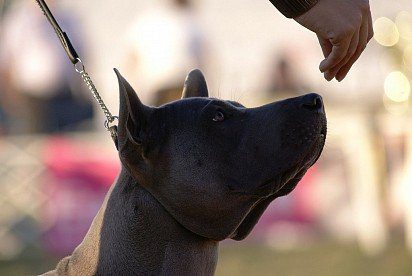
Representatives of the breed are quick-witted and smart animals, so they are happy to learn new things, if, of course, they are in a good mood. Basic commands are indispensable, but no less attention should be paid to teaching discipline and self-control. By nature, Ridgebacks are not prone to impulsive behavior, but improper socialization can provoke cowardice or even aggression. Don’t reward your dog if it shows intolerance towards someone. Aggressive behavior must be stopped even if the ridgeback has rushed to your defense. Restrained praise is more than enough. The animal should not associate the animal grin with your boundless joy, otherwise a repeated incident is inevitable.
Praise, delicacy and motivation are the three pillars on which the correct training of the Thai Ridgeback rests. Take the trouble to organize the training of the dog in such a way that it resembles an exciting game. Otherwise, the dog will show indestructible stubbornness. The animal will easily understand the principle of simple commands and will resist their prolonged study.
Representatives of the breed are excellent in dog sports – in particular, freestyle and agility – so it is recommended to dilute the monotonous training process with them.
Care and maintenance

The Thai Ridgeback is ideal for keeping in an apartment. It does not smell like a “dog”, and the short coat of the animal does not cause unnecessary inconvenience even during molting, which occurs once a year. “Velor” dogs shed much less hair than in the case of a standard cover. Abundant molting is a good reason to contact the veterinarian and take a scraping to reveal the presence of a subcutaneous tick.
The grooming of the Ridgeback coat is quite simple and is limited to regular combing twice a week. It is recommended to use a natural bristle brush or a rubber glove. They will not only remove dead hairs, but also give your pet a pleasant massage that will improve blood circulation. During molting, it is necessary to repeat the procedure every day.
The absence of an undercoat suggests the only possible option for keeping the Thai Ridgeback is in a room where there are no drafts. In the cold season, take care of warm clothes for your pet. Otherwise, colds will become commonplace, and the Ridgeback’s immunity will be significantly dulled.
Representatives of the breed do not tolerate dampness and abundant moisture, so you should not intentionally arrange a romantic walk in the rain for your pet. If bad weather caught you far from home, be sure that the Thai Ridgeback, with its inherent pedantry, will bypass all the puddles on its way. After such a walk, it is enough to wipe the paws of the animal: its cleanliness will not allow it to completely get dirty in the mud. Bathe the Ridgeback no more than once a month: this is more than enough. In addition, these dogs do not like water. For them, a hot day is not a reason to swim in the nearest body of water. On the contrary, the animal will bypass it by the tenth road and will try not to wet its paws.
Important: for bathing the Thai Ridgeback, use only special zoo shampoos with a mild formula. They will help to avoid the aggressive effects of surfactants on your pet’s coat.
The open ears of a dog are a favorable environment for the reproduction of pathogens and the accumulation of dust. Clean your Thai Ridgeback’s ears regularly to avoid infections, armed with a cotton pad and a special hygiene product, which can be found in most pet stores. Alternatively, use mild boric acid.
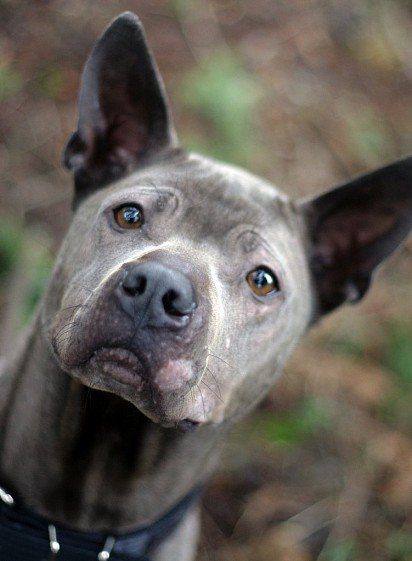
The eyes of the animal deserve no less attention. Morning discharge in the corners is a common occurrence: thanks to them, accumulated dust particles are cleansed. These lumps are easily removed with a damp, lint-free cloth. It is important not to wipe your eyes with the same side of the rag. For prevention purposes, it is necessary to use a decoction of chamomile once a week: this will prevent excessive “souring”.
The Thai Ridgeback’s teeth need to be brushed 3-4 times a week. Use special pastes for dogs: “human” hygiene products have a sharp taste and smell, foam a lot and are therefore not suitable for the pet’s oral cavity.
Representatives of the breed are energetic and active animals that grind their claws during long walks. However, it is worth stocking up on a large breed dog nail cutter and shortening the Ridgeback’s claws once a month. It is recommended to pre-hold the paws in warm water: this will greatly facilitate and speed up the procedure.
Don’t ignore your pet’s paw pads. Inspect them for wounds or cracks. An antiseptic will cope with the first problem, and greasy baby cream or sunflower oil will cope with the second.
The diet of the Thai Ridgeback can be divided into two types: natural food and dry food. In no case should you combine them (for example, add granules from the package to freshly cooked porridge): this will lead to problems with the dog’s digestive system.
The nutrition of the animal should be balanced, with a full content of the necessary macronutrients and vitamins. Since Ridgebacks don’t tend to pick their own tidbits, you’ll have to keep an eye on the quality and freshness of the food. It is important to avoid:
- generously seasoned food;
- river fish in any form;
- boiled or raw fat;
- chocolate desserts;
- dairy products;
- fruits with stones;
- raw meat and eggs;
- yeast dough;
- tubular bones;
- legumes;
- raw mushrooms;
- pork.
The gastrointestinal tract of Ridgebacks is highly sensitive, so you should not treat these dogs with new foods in large quantities. Introduce them gradually, while not forgetting to monitor the reaction of your pet.
The bowl should always be filled with fresh water. The ideal option is purified bottled, but tap water, previously infused for 6-8 hours, is also suitable.
Physical activity is a necessary condition for the proper maintenance of Thai Ridgebacks. Young dogs need a two-hour promenade, an adult animal needs half an hour in the morning and evening. Try to extend the time of the walk if possible, and on weekends, even go out of town, where the ridgeback will be able to run around and explore new territory.
Health and Disease of Thai Ridgebacks
Natural selection, which played an important role in the development of the breed for thousands of years, has helped keep the dogs in good health and immunity to traditional diseases. Most of the vices of Thai Ridgebacks are associated with their specific structure. Among the most common diseases are:
- problems with the digestive system;
- hip dysplasia;
- hypothermia and colds;
- dermoid sinus;
- dermatitis and eczema.
In addition, Thai Ridgebacks are prone to overweight, which can lead to cardiovascular diseases.
How to choose a puppy of Thai Ridgeback
All dogs require attention and love from the owner, and the Thai Ridgeback is a good example. This bunch of indomitable energy needs proper education, training and daily walks. Are you ready to give your pet every free minute? Now it’s up to you to choose the right puppy!
The first step towards acquiring a four-legged friend is the selection of a specialized nursery. Look for organizations that provide the information you need about the puppy’s parents. If they don’t have a single title at their disposal, think about it: most likely, the reason lies in the vices invisible to the eye, which will certainly affect the kids.
A professional breeder provides a veterinary passport, a memo for the future owner of the ridgeback and FCI documents. The puppy must be branded, vaccinated and dewormed in a timely manner. When getting acquainted with the litter, pay attention to the most active and moderately curious baby – it is he who is destined to become your companion! And don’t let the skin folds repel you like a Shar Pei : they will disappear as soon as the dog gets older.
Photos of Thai Ridgeback puppies
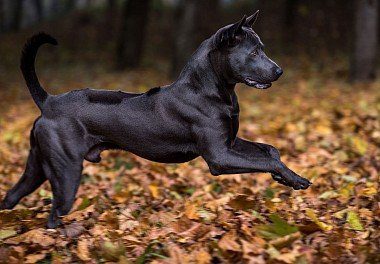
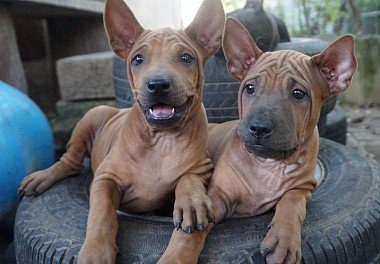
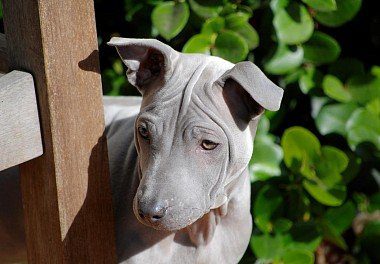
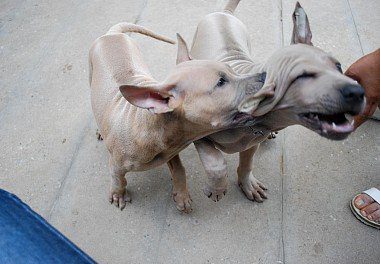
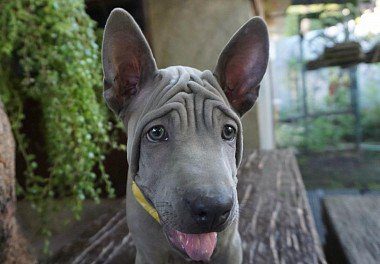
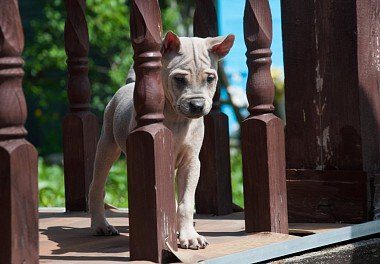
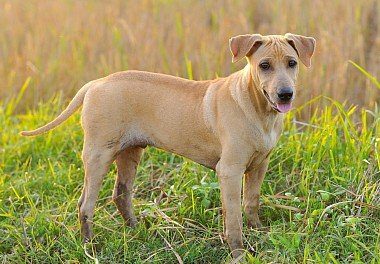
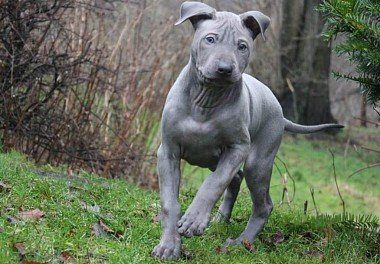
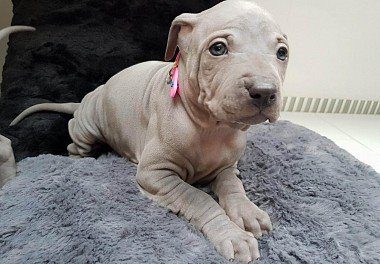
How much does a Thai Ridgeback cost?
Thai Ridgebacks are rare and therefore very expensive dogs. Basically, breeders visit European countries to breed ridgebacks, so the cost of animals pays for the additional costs. The price of puppies from the kennel starts from 1500$ and increases to cosmic sums! Of course, you can save money by purchasing a “purebred” dog at the bird market or from your hands, but it’s not a fact that you will get a healthy and balanced pet. If this price is out of proportion to the budget, pay attention to less expensive breeds – you will not be left without your best friend anyway!




